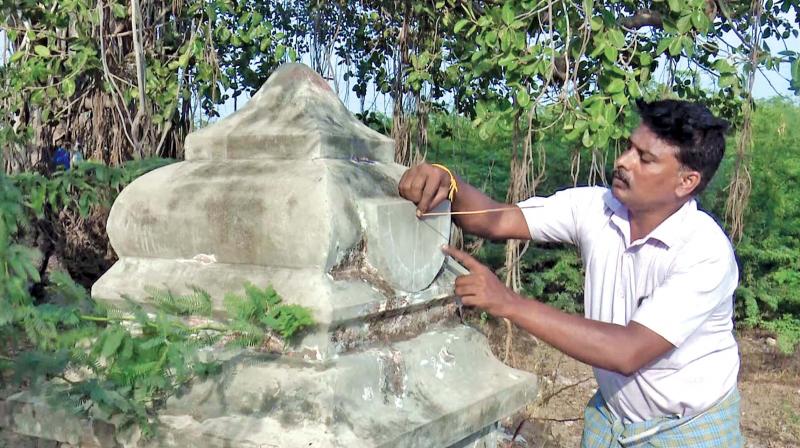Rameswaram: Sundial clock stands ravages of time
It is still a usable timepiece though it is no match for the digital watches of today.

RAMESWARAM: The Tamils' flair for architecture with a "social purpose" is evidenced here in a nondescript hamlet in Rameswaram, where a sundial clock affixed on a tomb in 1937, is still more than an object of curiosity even 82 years after it was built by a family apparently known for its philanthropy.
The sundial clock, situated perhaps by design in an open graveyard between Sambaigramam and Maangadu in Rameswaram, adorns the top portion of a commemorative tomb stone put up in memory of a 17-year-old girl who died a tragic death after being stung by a scorpion on August 15, 1937, exactly ten years before India won her Independence, says Satheesh who has studied the structure.
The girl, as per the details engraved on the tombstone, was the daughter of one Pazhaniaandi Pandithar, (Pandithars are mostly Tamil scholars), and Sethuparvatham Ammal. Unable to bear the grief of their spinster-daughter's premature death, the family had put up a memorial stone in the graveyard.
But they did not stop with that. Adorning one face of it is a semicircular sundial clock, one of the earliest types of timekeeping devices that all ancient civilizations have known including among the Greeks, Egyptians and the Tamils among others.
The apparent idea behind it, says Satheesh, is to enable any passerby to know the time of the day by "inserting a small stick on a hole provided on the upper part of the sundial." From the position of its shadow, when the stick is exposed to the sun's rays, which keeps moving relative to the position of the sun during the day, the approximate time of the day was sensed.
"This would have helped travelers to plan their onward journey," says Satheesh. It is still a usable timepiece though it is no match for the digital watches of today, he adds. "It shows how social purpose was embedded even in personal architecture of the Tamils like in a tombstone when an untimely demise takes place in the family," explains Satheesh. There is also a four-pillared 'mandapam' built for travelers to take rest and a 'sumaithaangi kal' (literally load-bearing stone), all within a small area in the graveyard that can be used by people. What is amazing is that the sundial has withstood the ravages of time, he added.
Meanwhile, Rameswaram experienced heavy rains in the wee hours of Tuesday bringing much-needed relief to the people.

